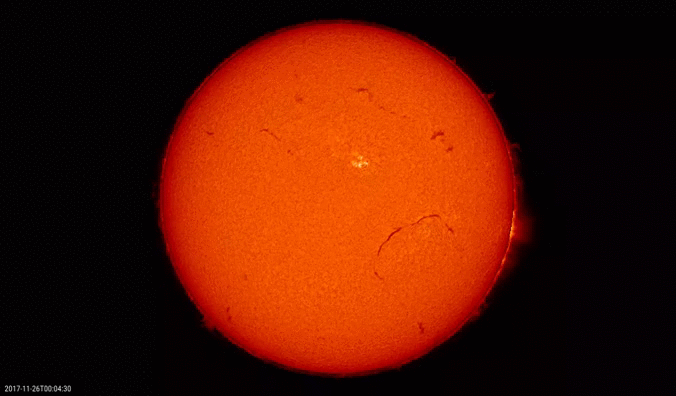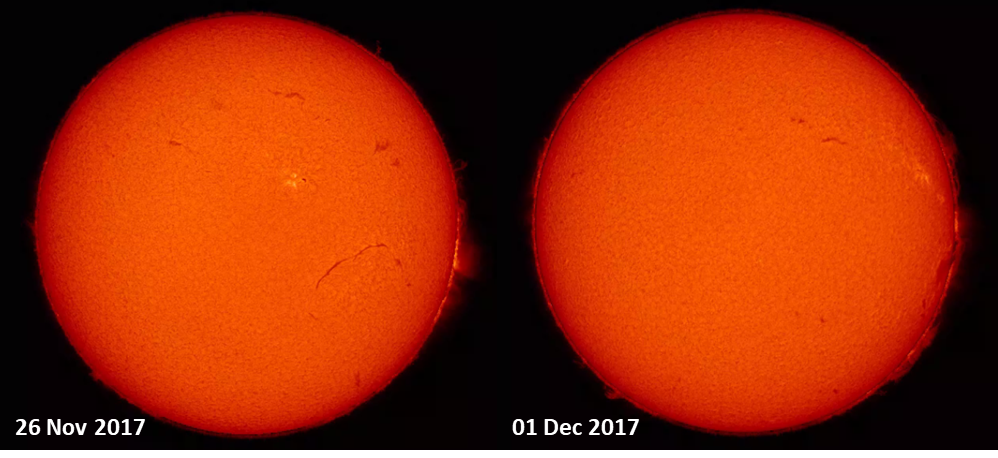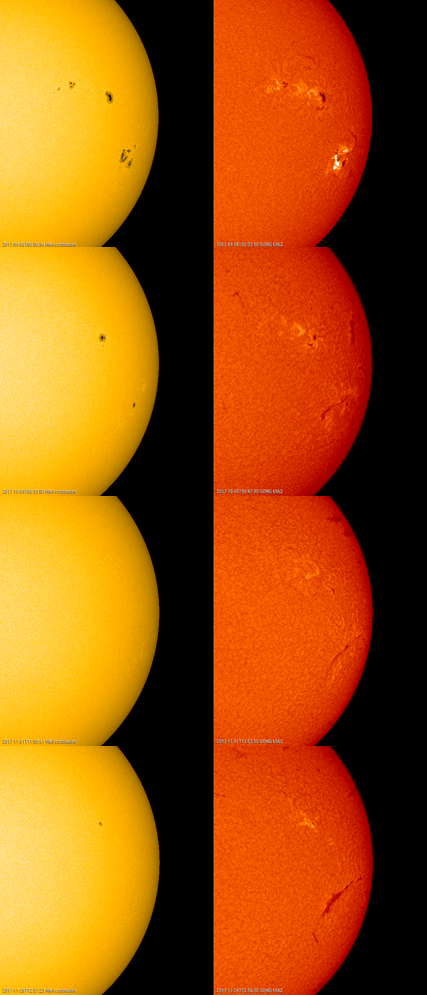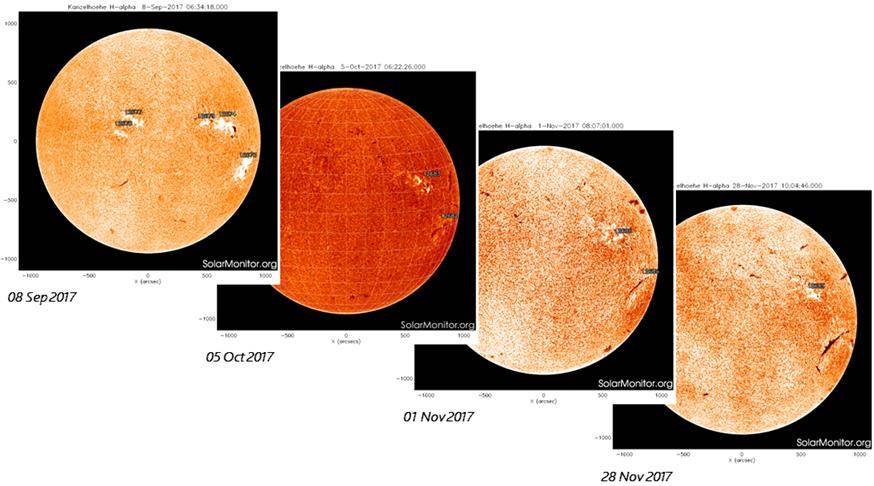Solar filaments are clouds of ionized gas above the solar surface squeezed between magnetic regions of opposite polarity. Being cooler and denser than the plasma underneath and their surroundings, they appear as dark lines when seen on the solar disk and as bright blobs when seen near the solar limb (then they are called "prominences"). Special filters are required to observe these features, and one such a filter is the Hydrogen-alpha (H-alpha) line in the red part of the solar spectrum. It shows the cool inner atmosphere of the Sun. Filaments can appear in e.g. sunspot regions, where they are called active region filaments. They can also appear completely isolated on the solar disk, and then they are called quiescent filaments. These can become very long and last for one or more solar rotations. Pending the stability of the surrounding magnetic regions, the longer filaments eventually may erupt.


The imagery above covers the period from 26 November till 1 December. Several filaments can be seen, and in particular one 40 degrees long filament in the southwestern solar quadrant. The images show an H-alpha picture from the GONG network overlaid on a extreme ultraviolet (EUV) picture in the SDO AIA 304 filter. H-alpha depicts the Sun's atmosphere close to about 10,000 degrees, but AIA 304 images the Sun at temperatures between 50,000-100,000 degrees. Hence, as the filament rotates over the southwestern solar limb, the "cold" filament plasma (charged particles) shows up darkish against the somewhat hotter, brighter background as imaged by the AIA 304 filter. As can be seen, despite its length, the filament did not erupt and quietly rounded the solar limb, towering about 5 to 6 earth diameters above it.

Trying to see how long this particular filament already survives, white light (SDO/HMI) and H-alpha imagery have been combined for the last 3 solar rotations (image above, for the dates of 8 September, 5 October, 1 November and 28 November. One arrives at the surprizing conclusion that this filament is in the same location as the active region NOAA 2673 early September this year, which was the source of the two most intense solar flares of the ongoing solar cycle 24 (see the STCE news items here and here). It is quite impressive that this filament is the still visible scar of the violent magnetic activity on the Sun more than 3 months ago. A reappearance of this filament within 2 weeks (around 14 December) is certainly not excluded.






